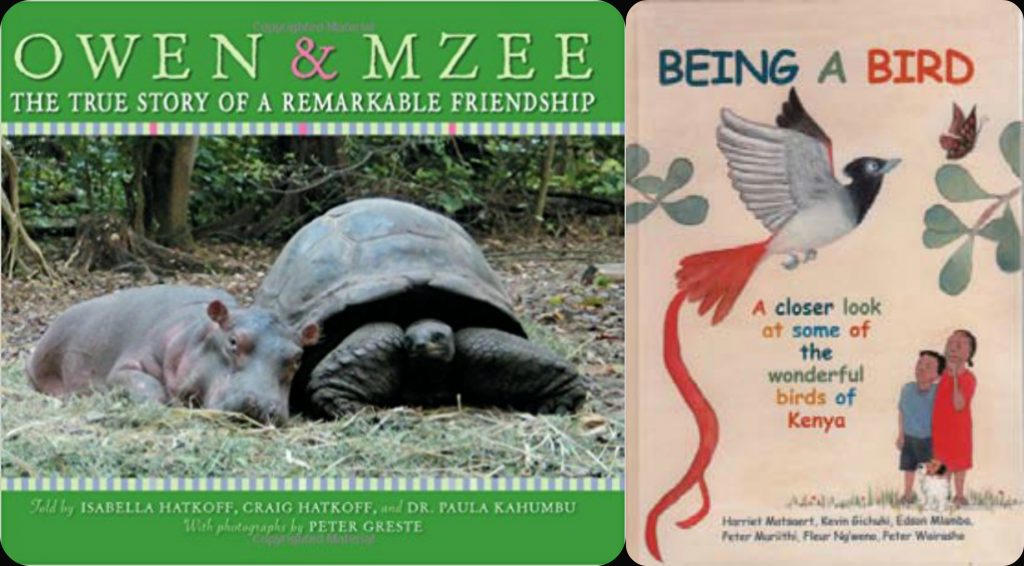5 Ways to Spark Environmental Awareness in Children

Addressing Regional Tourism Development in Africa
13th April 2017
The Big Conservation Lie Book Review and more
21st April 2017The earth is changing. This is a fact we must all come to terms with and seek ways in which we can grow, learn and adapt to this changes. Our lifetime has seen quite a number of human-caused environmental destructions occurring all across the globe. Children of today may not get to enjoy environmental benefits that have been there in the past or what we currently have. We seem to not remember that we are inheriting the earth from the future generation. Fortunately, children/ young citizens are environmentally aware, hence educating them on environmental issues is not as difficult as it may appear.
We cannot change what has happened in the past but we can choose to do things in a different way by changing our perspective towards environmental protection. Unless you would like to explain to future generations how trees, rhinos, elephants, tigers, polar bears, among many other species look like, then this is a time change our perspectives and be proactive on issues concerning the environment.
Children are always willing to learn as they are very curious beings. Educating children on environmental matters from an early age is prime since their attitudes towards the world around them are forming. Doing this helps to give children a new viewpoint from which they can begin to grow. In the end, this becomes a cool and gratifying task even for oneself.
“Only through direct participation can children develop a genuine appreciation of democracy and a sense of their own competence and responsibility to participate.” (As seen in Children’s Participation by Roger A Hart). One can be able to spark environmental awareness in children through the following ways;
-
Set weekends and holidays for outdoor activities
“A child educated only at school is an uneducated child.” – George Santayana
With today’s technology, all a child would want to do is stay indoors and play with the phone/handheld device, watch TV and play video games all day. One can, however, change this by setting places to go on the weekends and holidays. This does not necessitate going to spend the whole day at the mall.
One can pick outdoor recreational facilities from parks to nearby forests and even your own back yard or farm. Outdoor activities like picnics, hiking, bike riding, gardening, camping and any other fun and interesting activity that children could do outside is a plus.
This makes them aware of the world outside the four corners of the room they are accustomed to. Being outside has its many perks. They will not only see but also hear, feel and smell. All their five senses will be alert while outdoors. Their perspective and awareness on the environment will definitely be stimulated.
Remember to have a camera to document all these activities. Memories also spark awareness as they will be able to see the changes that have occurred in the environment especially for places mostly visited.
-
Grow trees
“The best time to plant a tree was 20 years ago, the second best time to plant a tree is now.” – Chinese Proverb
This proverb could be deciphered in many different ways. On an environmental viewpoint, planting trees early enough will result in mature trees now but planting trees now will also be of benefit in future.
With the onset of deforestation happening in major forests within the country and across the globe, teaching children the importance of trees and how trees affect our daily lives is vital. This can be done by growing trees with them. These way, they will be able to protect the trees that are already there and not see the need to cut down trees carelessly. They begin to think in a sustainable way. Growing trees will also give them a connection to those they have planted because as they watch how trees grow, they will be puzzled by how trees take their time to mature. This plants a ‘seed’ in their minds on how vital protecting the environment is.

“Trees do not make a forest, forests make forests.”
-
Recycle, Reuse and reduce
Reduce. Strive to always use less to enable a reduction in the amount of waste produced. This earlier post highlights ways you can reduce waste production at home and children can easily adapt to.
Reuse/upcycle. Make DIY crafts together with children using tissue paper rolls, plastic bottles, metal cans, newspapers, plastic bags and any other item that can be reused. For ideas or reusing and upcycling, DIY Crafts and Projects is a good place to start.
Recycle. Show children what can be recycled and the importance of recycling. You can even schedule to take children to recycling plants like Ecopost Limited which recycles plastic waste into sustainable products.
-
Entertainment: Books, wildlife magazines and documentaries
On days when you cannot go outdoors due to bad weather, or even during weekdays or on long trips, always have some entertainment children can enjoy and learn. There are a number of environmental storybooks children can read such as Owen and Mzee and Being a Bird. You can also subscribe to environmental and wildlife related magazines when you can and stock up on plenty of wildlife documentaries. NTV Wild has made it easier to access wildlife documentaries and this could be a good start to teaching children on environmental matters if you haven’t done so already.

Story Books
-
Be an example
“Children hear everything you say, and they mimic everything you do. Give them a good example.”
Do not be the type of person who tells children to protect the environment yet you are the same person who; cuts down trees, kills a bird, insect, snake or any other wild animal or plant with no valid reason whatsoever, throws trash out of a moving (even stationary) vehicle window, leaves waste in recreational facilities, throws plastic rappers everywhere, use plastic bags and bottles every so often and expect the child to not do the same.
Practice what you preach. Enough said.





2 Comments
Nice article and great to see how you put the points together, but one fact that we need to agree on is that children are an imitation of the parents (society). (We litter they will litter, we urinate on walls they will do so, just to mention a few.) So being an example is key and should come first, but if the ‘examples’ are not able to embrace conservation efforts in the day to day activities. Children will find it more difficult to appreciate nature. share this widely people need to know how best to engage children in conservation efforts
Agreed. If we appreciate nature then definitely children will also see the need to do the same.